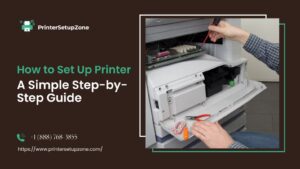
When an employee leaves an organization, it’s often a moment of transition filled with paperwork, exit interviews, and administrative tasks. However, for many companies, this transition isn’t managed efficiently. That’s where employee offboarding software becomes a game-changer. This type of software helps streamline the exit process, ensures compliance, protects company data, and leaves departing employees with a professional and respectful experience.
Let’s explore why every modern business—regardless of size—should consider using employee offboarding software, and how it can positively impact both people and processes.
Understanding Employee Offboarding: Why It Matters
Offboarding refers to the formal process that occurs when an employee leaves a company, whether voluntarily or involuntarily. It involves multiple steps: conducting exit interviews, revoking system access, retrieving company property, transferring knowledge, processing final paychecks, and updating HR records.
Traditionally, these tasks are manual, scattered across departments, and prone to human error. For instance, if IT doesn’t revoke access on time, a former employee might still have access to sensitive systems—a serious security risk. Similarly, delays in final paycheck processing or benefits termination could lead to compliance issues or disgruntled former employees.
A smooth offboarding process is just as important as onboarding. It ensures that the company’s brand reputation remains intact and that no loose ends affect ongoing operations or data security. And this is where automation and digital solutions come into play.
Key Features of Effective Employee Offboarding Software
Employee offboarding software is designed to simplify and secure every step of the offboarding process. It typically includes a range of features that allow HR, IT, legal, and finance departments to collaborate efficiently. Here are some of the core features to look for:
1. Workflow Automation
This is the backbone of any offboarding tool. Automated workflows ensure that tasks such as exit interviews, access removal, document collection, and equipment return are completed in a timely and consistent manner. It eliminates the risk of skipping steps or relying on memory.
2. Role-Based Access Controls
With role-based access, stakeholders only see the tasks relevant to them. For example, IT personnel receive alerts to revoke system access, while HR focuses on compliance forms and knowledge transfer. This minimizes confusion and speeds up task completion.
3. Compliance and Documentation
Regulations like GDPR, HIPAA, and labor laws require companies to handle employee exits in specific ways. Offboarding tools help ensure that all necessary documentation is filed and legal requirements are met. Digital checklists and audit trails make it easy to track compliance in real time.
4. Exit Interviews and Feedback Collection
Capturing honest feedback during the exit interview is essential for improving employee retention and company culture. Offboarding software often includes customizable survey templates or integrations with employee engagement tools to make feedback collection seamless and measurable.
5. Asset and Access Management
The software can track all company assets—like laptops, ID badges, phones—and ensure they’re returned before the employee’s last day. It can also integrate with IT systems to automatically revoke access to cloud tools, email accounts, and internal platforms.
6. Notifications and Task Assignments
Automated notifications ensure that all departments are aligned. Tasks are assigned to the right people with clear deadlines, so nothing is forgotten or delayed.
Benefits of Using Offboarding Software
Implementing offboarding software provides a wide range of benefits, from reducing human error to boosting organizational efficiency. Let’s break down some of the most valuable advantages.
Improved Data Security
One of the biggest risks in offboarding is unauthorized access after an employee leaves. Automated offboarding ensures that system access is terminated immediately, reducing the risk of data breaches or misuse.
Enhanced Compliance
Labor laws and industry regulations often require strict processes during offboarding. With built-in compliance tracking, software helps businesses avoid costly legal issues and maintain thorough records of every offboarding event.
Better Employee Experience
Even if an employee is leaving, their final experience matters. A smooth, well-managed exit shows professionalism and leaves a lasting impression. This is especially important in today’s world where ex-employees might return in the future or share their experience on platforms like Glassdoor.
Consistency Across the Organization
Without a standard process, offboarding can vary widely depending on the manager or department. Software introduces consistency, ensuring that every departing employee—whether an intern or senior leader—receives the same level of professionalism.
Time and Cost Savings
Manual offboarding is time-consuming and error-prone. Automating the process allows HR and IT teams to focus on more strategic tasks, saving both time and operational costs in the long run.
Choosing the Right Employee Offboarding Software
With many solutions on the market, selecting the right offboarding software requires careful consideration. Here are some factors to keep in mind:
Integration Capabilities
Choose software that integrates with your existing HR, IT, payroll, and asset management systems. This ensures that data flows smoothly and tasks are coordinated across platforms.
Customizability
Each organization has unique needs. Look for tools that allow you to customize workflows, checklists, templates, and permissions according to your processes.
User Experience
A clean, intuitive user interface is essential. Your HR and IT teams should be able to use the software without a steep learning curve. Self-service portals for managers or departing employees can also add value.
Reporting and Analytics
Analytics can provide insights into why employees are leaving, how long offboarding takes, and where bottlenecks occur. This information is crucial for improving processes and reducing turnover.
Security Standards
Ensure the software follows high-level security protocols, especially when handling sensitive employee data and system credentials. Compliance with standards like ISO 27001 or SOC 2 is a good sign.
Offboarding Remote Employees: A Rising Challenge
With the rise of remote work, offboarding has become even more complex. Retrieving devices, revoking remote access, and maintaining compliance without face-to-face interactions pose new challenges. This is where digital solutions prove invaluable.
Employee offboarding software helps bridge the physical gap by automating the return of hardware via courier services, enabling virtual exit interviews, and ensuring digital access is cut off at the exact time of exit. It offers flexibility and control even when teams are distributed globally.
Moreover, remote offboarding leaves little room for improvisation. Every step must be planned, documented, and executed flawlessly. A software solution ensures no detail is missed—even if your employee is logging out from thousands of miles away.
Conclusion
In today’s business environment, managing employee departures is no longer just an administrative function—it’s a strategic priority. Whether you’re dealing with layoffs, resignations, or retirements, how you handle offboarding speaks volumes about your company’s professionalism and internal organization.
By investing in robust employee offboarding software, companies can protect sensitive data, enhance the employee experience, maintain compliance, and improve operational efficiency. In a world where reputation and retention are closely linked, a strong offboarding process is not just nice to have—it’s essential.






